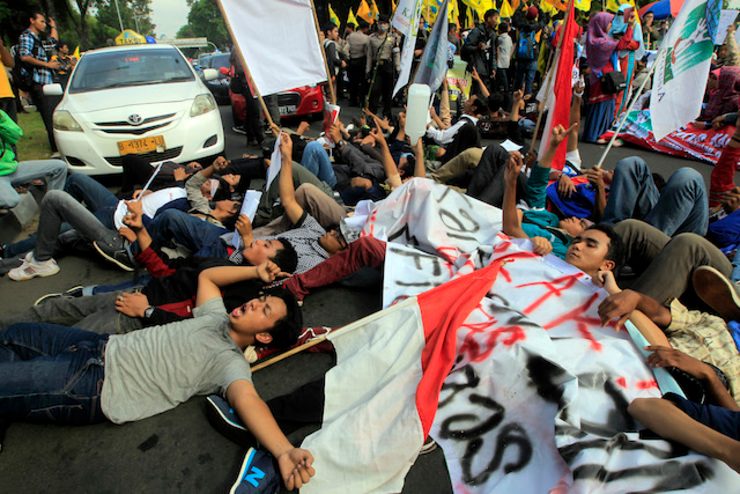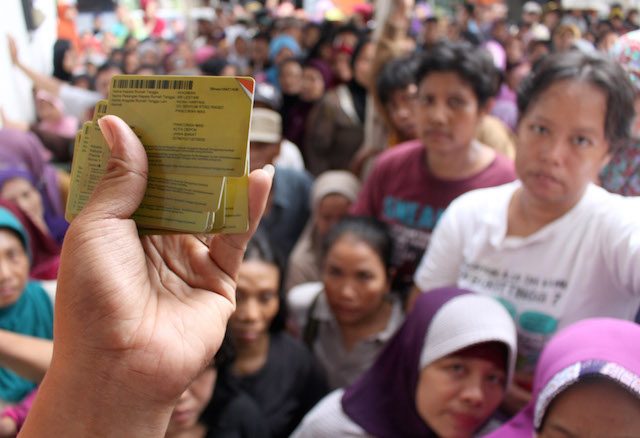SUMMARY
This is AI generated summarization, which may have errors. For context, always refer to the full article.

JAKARTA, Indonesia – Raising the prices of subsidized fuel was just the first step in reforming Indonesia’s subsidy regime, according to Indonesian Finance Minister Bambang Brojonegoro.
“We want to change to a better targeted subsidy regime. We want to provide the subsidy directly to the people entitled. The first step is by adjusting the subsidized fuel price,” he said at the Indonesia Economic Forum 2014 on Tuesday, November 25.
These reforms include moving away from subsidizing commodities like fuel and fertilizer, to delivering subsidies directly to the people in need.
It also includes shifting to a fixed fuel subsidy scheme – which means consumers would bear the impact of global oil price fluctuations, not the government.
President Joko “Jokowi” Widodo announced the politically sensitive fuel price hike on November 17 – barely a month after he took office – and was promptly greeted with street protests and a drop in approval ratings.
But businessmen and economists – who have long called for the removal of the fuel subsidies that are seen to be poorly targeted and wasteful – cheered. The middle class is seen to benefit more from the fuel subsidies than the poor, and economists say the money spent for it could be put to better use.
Before the price hike, the subsidies would have cost Indonesia almost $30 billion in 2015, or about 18% of its budget. By increasing the price of subsidized gasoline and diesel by IDR2,000 per liter ($0.16), Indonesia expects to save almost IDR120 trillion ($9.6 billion) next year – money it will use for much-needed infrastructure development.

‘Better targeted’
The finance minister explained that the government’s goal was to have a subsidy regime that was not based on commodities but instead targeted the people in need more directly.
“This time we will focus more on a sustained conditional cash transfer program,” he said. “That’s why we have introduced the smart cards for universal health care facilities, education for the poor, and social direct assistance.”
These welfare “smart cards” include a social protection card that would directly give 15.6 million poor families ID200,000 a month for at least the next 2 months, to help them cope with the impact of the fuel price hike.
The reforms also go beyond fuel subsidies and will also be applied “to other current forms of subsidies such as electricity, food, and fertilizers,” he said.
In addition, Bambang said the government is “still seriously planning to implement the fixed subsidy regime.”
This means the amount of subsidy per liter will be a fixed price, and actual fuel prices will fluctuate based on global oil prices.
“From a fiscal point of view, the subsidy budget will be much more manageable. It will be dependent on consumption volume, and not affected too much by the volatility of exchange rate or fuel price rise,” he said.
Reallocation
The finance minister reiterated that savings from the subsidies would be diverted to productive expenditures.
“First, the government will allocate most of the savings to infrastructure development, especially basic infrastructure development,” he said, adding that this would support food security and the maritime, agriculture and energy sectors.
‘The fuel prike hike shows the government can and will make difficult and perhaps unpopular decisions’
The funds would also be diverted to social protection programs, such as the smart cards, and a portion would be transferred to local governments to help stimulate regional development.
Finally, the savings would be used to lower the budget deficit to give the government room for fiscal maneuvers and anticipate future global uncertainty.
In addition to these, Bambang said reducing the fuel subsidy would encourage the exploration and development of renewable energy.
“(The fuel price hike) signals that the government is very serious in addressing some structural economic problems that often hamper our economic development agenda,” he said.
“It shows the government can and will make difficult and perhaps unpopular decisions as long as it is for the greater good of our people.” – Rappler.com
Add a comment
How does this make you feel?
There are no comments yet. Add your comment to start the conversation.